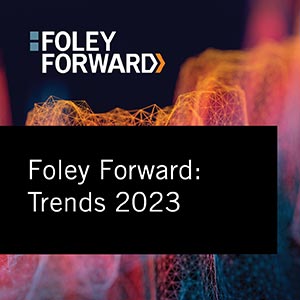
The cloud computing market has grown at a rapid rate and is expected to continue that trajectory for years to come. With this increasing demand, it is important to stay up to date on the latest trends and technologies so you can make the most of the opportunities available. Here are some of the trends in cloud computing that you should look out for in 2023:
The Popularity of Edge Computing is Growing
Edge computing is quickly gaining traction due to its ability to process data closer to where it is being generated. As more devices become connected, edge computing allows for the processing of an increased amount of data without having to send it to the cloud. This reduces latency and improves performance, making it an invaluable tool for any business.
As a side effect, edge computing allows for enhanced cybersecurity as data never needs to leave the device, providing an extra layer of security for businesses. Furthermore, it also provides cost savings for businesses as data processing can be done locally without the need for expensive cloud infrastructure.
Security Has Been and Will Continue to be a Focus
Cloud computing has become an integral part of organizations in the modern digital world, with an unparalleled ability to provide scalability and flexibility to businesses. However, security has increasingly become a key focus of organizations utilizing the technology. Security is and will always be an essential component of cloud computing, and organizations must take steps to ensure that their cloud environment is secure. Security is critically important because it ensures that confidential data is kept safe from malicious actors, and it also helps protect cloud infrastructure from cyber threats.
In the cloud computing environment, organizations must ensure that access to their services and data is secure and that all data is encrypted and stored securely. Organizations must also ensure that their cloud infrastructure is regularly monitored and updated to protect against potential security breaches. Companies need to continue to invest in advanced security technologies as well as to develop policies and procedures to protect data and ensure that their cloud environment is compliant with relevant regulations and industry standards.
Machine Learning and Artificial Intelligence Will be Widely Used
The importance of artificial intelligence and machine learning is rising in the field of cloud computing. Companies are now starting to leverage these potent technologies in ways that were previously impractical, thanks in particular to cloud computing. At a fraction of the cost of conventional computing systems, cloud computing offers access to enormous datasets, potent processing resources, and complex algorithms. With the ability to base judgments on the data they have obtained, this has enabled businesses to develop more accurate and effective models. Task automation, increased effectiveness, and cost savings are all now within reach. As cloud computing becomes more accessible and affordable, machine learning and artificial intelligence will become increasingly prevalent in many industries. In 2023, we can expect to see more companies using these technologies in combination with cloud computing to gain a competitive edge in the market.
Task automation, increased effectiveness, and cost savings are all now within reach. As cloud computing becomes more accessible and affordable, machine learning and artificial intelligence will become increasingly prevalent in many industries. In 2023, we can expect to see more companies using these technologies in combination with cloud computing to gain a competitive edge in the market.
Increasingly Common Cloud-Native Applications
Applications that are cloud-native are created to benefit from the scalability, adaptability, and affordability of cloud computing. These tools can subsequently be used to build solutions that are specifically tailored to an organization’s needs. Cloud-native applications are rising in popularity as businesses turn away from on-premises technology and toward cloud-based solutions. Businesses can swiftly provision the resources required to run their applications as well as scale up and down as appropriate. Additionally, distributed computing’s power is harnessed by cloud-native programs, resulting in better resource usage, performance, and availability. These advantages make cloud-native apps a tempting option for businesses wishing to maximize cloud computing.
Serverless Computing Will Continue To Gain Traction
The way that companies and developers access computing resources is changing thanks to the innovative technology known as serverless computing. Simply said, serverless computing enables companies to execute apps without having to manage any infrastructure or servers. This allows businesses to concentrate on developing their applications rather than worrying about managing the underlying infrastructure. As a result, it is an appealing option for businesses seeking an easier approach to deliver apps.
Over the coming years, serverless computing will continue to gain in popularity as businesses look for more affordable and efficient ways to deploy programs. As a result, there will be less of a need for server provisioning and management, which can be an expensive and time-consuming necessity. Complementary to its other advantages, serverless computing also provides greater security because organizations are relieved of the responsibility of maintaining the underlying infrastructure.
De cara al futuro
We expect to see companies taking advantage of the synergistic combination of serverless computing, edge computing, artificial intelligence, and machine learning to further drive efficiencies, experience, and performance. While edge computing enables local processing of data, serverless computing enables users to access their data from anywhere. In order to increase the speed, accuracy, and scalability of these applications, artificial intelligence and machine learning will benefit from leveraging both serverless and edge computing. This will lead to quicker decision-making and optimized performance.

